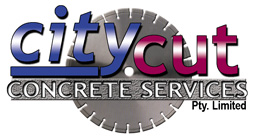Most Common Concrete Hazards and Their Solutions
Concrete is one of the most used construction material in the world and is perhaps one of the most durable. Just because it is durable and resistant, doesn’t mean it cannot develop problems overtime. Every operation that implements concrete cutting and drilling must include work safety training and equipment. The training of concrete cutting workers should include workplace safety, dealing with risks associated with demolition of patios, sidewalks, driveways, retaining walls, and concrete structures. Concrete problems can’t occur if you hire knowledgeable staff – familiar with all safe practices and procedures relevant for the work to be performed.
When it comes to choosing a company for concrete cutting they must present the equipment they are about to use, operation and shut-down procedures in compliance to their working order. Every project, whether it is heavy or soft demolition includes the risk of sudden and violent saw movements during the cutting operations. The workers are most likely to suffer if the saw changes the direction of the cut and becomes difficult to manage. Kick-backs have many causes so we need to take a methodical approach to minimize the risk while operating on embedded objects.
People who regularly work with concrete are at high risk of hazards caused by inverted cutting, especially if they are not appropriately trained. Inverted cutting is made on the top of the slab while the machine is held above the shoulder height. Under any circumstances water-cooled saws should not be electrically powered and should never be used in inverted cutting because of the risk of injuries.
Dust and gases are mainly generated by cutting and drilling procedures during dry operations. Examples don’t not include water or liquid nitrogen when working in furnaces when saws need to be cooled. It is suggested that ventilation system may reduce the dust and can protect the workers from fibres and other toxic effects caused by silica and asbestos.
In some instances the excessive noise from cutting and drilling in a potential workplace hazard because an operator hearing may be damaged by very loud noise over a long period of time. When working with such hazardous surfaces, it is suggested an on-site equipment to be worn during every working day while performing loud noise activities. Some of the most successful safety rules implemented different models of noise-reduced blades carefully chosen for any particular job and proper maintenance of hearing protectors.
Electric Cables, Water or Gas Pipes – One cannot emphasise enough the dangers caused by electricity during concrete cutting. The slurry that is formed from the water always increases the chances of electrocution; therefore, its removal with dry or wet vacuum cleaner is necessary. Environmental concrete slurry control and disposal are widely used as a protection whenever possible.
The most common concrete cutting and drilling project involve risks so it is important for us to follow certain laid down safety measures. Saws must be daily inspected and every project needs to be analysed together with communication and consultation to keep track on any possible damage or injury. Concrete cutting Sydney implements supervision and regular training as an imperative in all concrete and masonry cutting and drilling operations.

